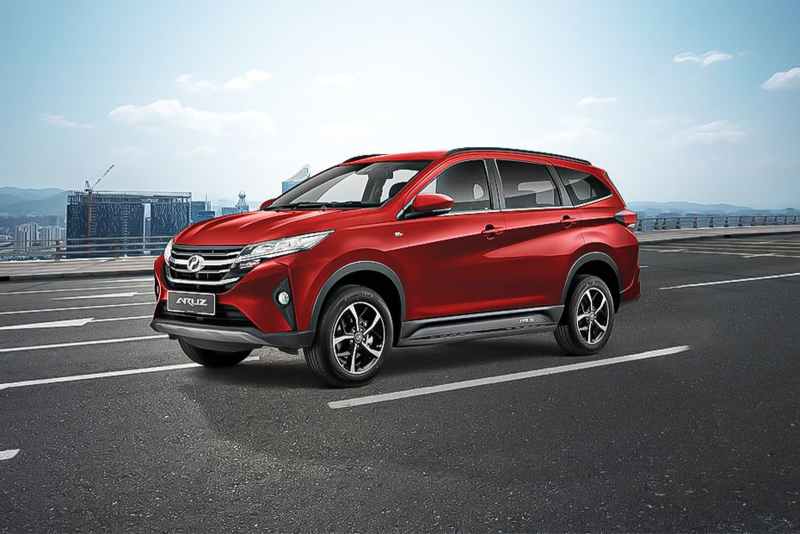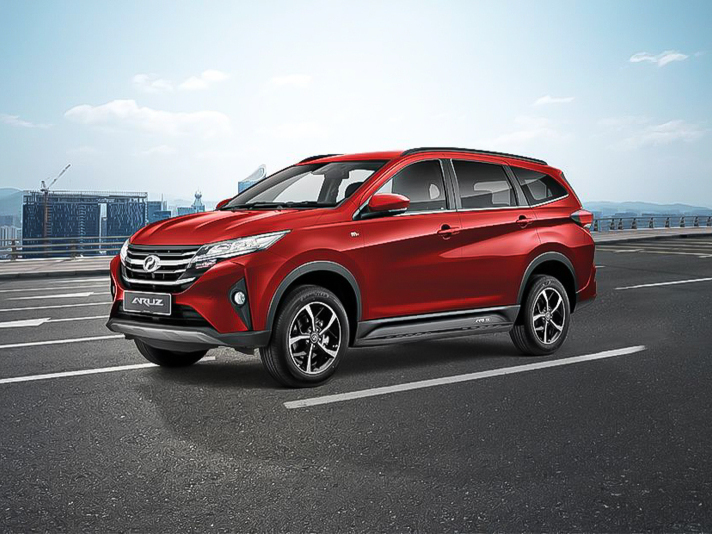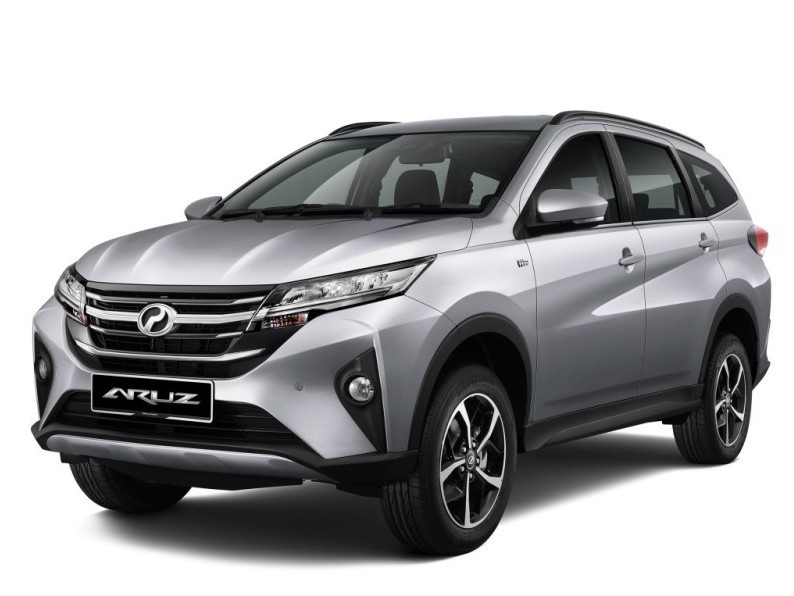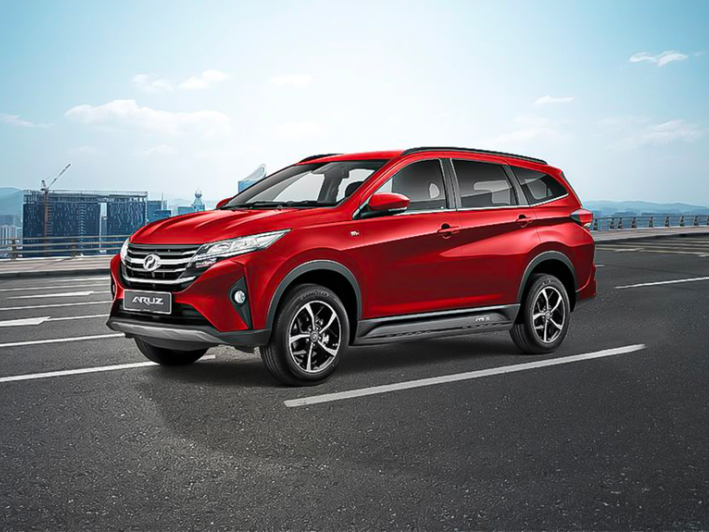Q
perodua aruz berapa cc
In the Malaysian market, the Toyota Vios and Honda City are both highly sought - after B - segment sedans, each with its own strengths, ultimately, the choice boils down to personal needs. The Toyota Vios has built a solid reputation for reliability and low maintenance costs. Powered by its 1.5L Dual VVT - i engine, it delivers smooth power and impressive fuel efficiency, making it a top pick for buyers who prioritize practicality and long - term ownership. In contrast, the Honda City leans into a sportier driving experience thanks to its 1.5L i - VTEC engine. It also enhances interior tech, featuring an 8 - inch touchscreen and the Honda Sensing safety suite—perfect for those who crave a bit more tech and dynamism in their ride. Space - wise, the City edges ahead with slightly more rear legroom, while the Vios’ suspension tuning leans towards comfort, ideal for daily family commutes. Both hold their value well in the used car market, but the Vios has a bigger presence on Malaysian roads and benefits from a more extensive service network. My suggestion is to head to the dealership, take both for a test drive, and let your budget, driving style, and typical usage scenario guide you. Additionally, don’t forget to check out rivals like the Nissan Almera or Proton X50 too. Comparing specs and value across the segment is always beneficial.
Special Disclaimer: This content is published by users and does not represent the views or position of PCauto.
Related Q&A
Q
What are the colors of Aruz 2019?
The 2019 Perodua Aruz comes with a variety of color options, including Solid White, Metallic Silver, Metallic Dark Grey, Metallic Delima Red, and Pearl Delima White. These choices should cater to different consumers' aesthetic preferences. As a 7-seater SUV, the Aruz doesn't just offer plenty of colors – its design also focuses on practicality and family needs, with a spacious interior and flexible seating arrangement that's perfect for family trips. Color isn't just about looks; it also affects resale value and daily maintenance. For example, lighter colors reflect more sunlight in hot weather, keeping the interior cooler, while darker shades might need more frequent cleaning to stay looking good. Plus, the Aruz's metallic and pearl paint finishes are generally more durable and visually appealing than regular solid paint, though they might cost more to maintain. When picking a color, besides personal taste, it's worth considering the local climate and how you'll use the car to keep it in great shape for years to come.
Q
How many km per liter is Aruz?
The actual measured fuel consumption of the Aruz is 22 liters per 100 kilometers. After conversion, the vehicle can travel approximately 4.55 kilometers per liter. Its official combined fuel consumption is 6.41 liters per 100 kilometers, meaning it can travel about 15.6 kilometers per liter.
In actual driving, the vehicle's fuel consumption is affected by various factors such as driving style, road conditions, and vehicle load. The specific kilometers traveled per liter may vary. For example, situations like rapid acceleration, sudden braking, and long-term traffic jams will increase fuel consumption, and the kilometers traveled per liter will decrease accordingly. On the other hand, good driving habits such as smooth driving and maintaining an appropriate speed can help improve fuel economy and increase the kilometers traveled per liter.
Q
Is Aruz ladder frame?
The Perodua Aruz features a monocoque chassis instead of a ladder frame. This design, commonly found in modern SUVs, offers better road-driving stability and riding comfort. At the same time, it reduces the vehicle's weight to improve fuel efficiency. As a 7-seat SUV targeting family users, the Aruz's monocoque structure is more suitable for daily urban commuting and long-distance travel, balancing spatial practicality and handling flexibility.
It's worth noting that ladder frames are mostly used in hardcore SUVs or pickups that emphasize off-road capabilities, such as the Toyota Hilux. These vehicles are characterized by strong torsional resistance and easy maintenance, but they offer poor comfort on the road. When Malaysian consumers choose a vehicle, they can make a decision based on their own needs. If the vehicle is mainly for urban use, a monocoque chassis is more appropriate. If they often encounter rough terrains, ladder-frame vehicles have more advantages.
As a local brand, Perodua has fully considered the road conditions in Malaysia and users' habits in the design of the Aruz. Its chassis tuning not only ensures comfort but also allows it to handle light unpaved roads.
Q
What kind of engine is in Perodua Aruz?
The Perodua Aruz is equipped with a 1.5-liter Dual VVT-i naturally aspirated gasoline engine, coded as 2NR-VE. This engine is provided by Perodua's partner, Toyota. It adopts the Dual Variable Valve Timing-intelligent (Dual VVT-i) technology, which can optimize fuel efficiency and power output. The maximum power is 77 kilowatts (104 horsepower), and the peak torque is 136 Nm. It is paired with a 4-speed automatic transmission or a 5-speed manual transmission, suitable for daily urban driving and light off-road needs. This engine has shown stable performance in the Malaysian market and is favored by consumers for its reliability and low maintenance cost. The Dual VVT-i technology improves combustion efficiency, reduces fuel consumption, and at the same time cuts emissions by adjusting the opening times of the intake and exhaust valves, meeting environmental protection standards. For Malaysian consumers, the engine configuration of the Aruz offers high cost-effectiveness among similar models, especially suitable for family use, balancing power and economy. Moreover, compared with turbocharged engines, naturally aspirated engines have a simpler structure and lower maintenance costs, making them a great choice for users who value practicality.
Q
How much is a Perodua Aruz battery?
The battery price of the Perodua Aruz usually ranges between RM200 and RM400, specifically depending on the battery brand, model, and where you purchase it. The price of the original-factory battery will be slightly higher, while third-party brands like Bosch, Amaron, or Century may offer more cost-effective options. It is recommended that car owners choose a battery with specifications that match their vehicle when replacing the battery. For example, common models such as 44B20L or 55D23L can ensure compatibility and performance.
In addition, regularly checking the battery status and keeping the charging system operating normally can extend the battery life. Generally, the lifespan of a car battery is around 2 to 3 years, but the actual usage time will be affected by driving habits and climatic conditions. If you find it difficult to start the vehicle or the lights are dimming, it may be a sign of battery aging, and you should check or replace it in time.
In Malaysia, many car repair centers or battery specialty stores offer free testing and installation services. Before making a purchase, you can compare the prices and services of several stores to get the most suitable solution.
Q
Which country made Perodua Aruz?
The Perodua Aruz is manufactured by Perodua, a local Malaysian automotive brand. It's a seven-seat SUV specifically designed for the Malaysian market. Since its launch in 2019, it has won the favor of many family users thanks to its spacious interior and practicality. As a Made-in-Malaysia vehicle, the Perodua Aruz is assembled locally, which shows Perodua's emphasis on meeting the needs of Malaysian consumers. Its design and functions are optimized for Malaysian road conditions and family use. For instance, the high ground clearance makes it suitable for rural roads, and the fuel-efficient 1.5L Dual VVT-i engine takes into account daily economy.
It's worth mentioning that Perodua, as the second-largest car manufacturer in Malaysia, has long-term partnerships with Japanese automakers Toyota and Daihatsu. So, it has advantages in technology sharing and quality control. The Aruz incorporates some proven technologies from its partners. For example, it shares the platform with the Toyota Rush, but the configuration and pricing strategies are adjusted for the Malaysian market, making it a highly cost-effective choice.
For Malaysian consumers who value practicality and budget, the Aruz offers a solution that meets local needs. At the same time, it also demonstrates the progress of local cars in R & D and manufacturing.
Q
Is Aruz 6 seater?
The Perodua Aruz is a 7-seater SUV designed for family use, featuring a 2+3+2 seat layout. So, strictly speaking, it's not a 6-seater model. However, if you fold the third-row seats, it can be transformed into a 5-seater configuration. This vehicle is equipped with a 1.5L Dual VVT-i engine paired with a 4-speed automatic transmission, focusing on economic practicality and high cost-effectiveness. Its width of 2,025mm and length of 4,075mm offer relatively spacious seating space, which is especially suitable for the medium-and short-distance travel needs of multi-member families in Malaysia.
It's worth noting that 7-seater models are quite popular in the Malaysian market, mainly due to the local family structure and usage habits. Compact SUVs like the Aruz combine the flexibility of urban commuting and the convenience of occasional passenger-carrying. When consumers are making a purchase, they can compare the space utilization differences with similar models in the same class, such as the Proton X70 or the Toyota Rush. At the same time, it is recommended to take a test drive to experience whether the legroom in the third row meets your needs, as the vehicle's size directly affects the comfort during long-distance rides.
Q
Is Perodua Aruz an MPV?
The Perodua Aruz is indeed classified as a compact MPV (Multi-Purpose Vehicle). It's built on the Toyota Rush platform and features a three-row, seven-seat layout, making it suitable for families or consumers who need more passenger space. The Aruz's body dimensions and relatively high ground clearance also endow it with certain SUV characteristics. However, its official positioning still focuses on MPV functionality, emphasizing practicality and space flexibility.
In the Malaysian market, the Aruz has become the top choice for many families, thanks to Perodua's brand advantage of high cost-effectiveness and low maintenance costs. MPV models are particularly popular locally because they can meet both daily commuting and weekend family travel needs. The Aruz is also equipped with safety features such as the ASA (Advanced Safety Assist) driving assistance system, which further enhances its competitiveness.
If users are considering an MPV but occasionally need to tackle light unpaved roads, the Aruz's crossover design is a better fit than traditional MPVs. However, it should be noted that the third-row space is more suitable for children or short-distance rides. When Malaysian consumers are choosing a car, they can comprehensively consider factors like the number of seats, fuel consumption (the Aruz is powered by a 1.5L Dual VVT-i engine), and their budget. They can also compare it with models in the same class, such as the Proton Exora or Toyota Avanza. Ultimately, the choice depends on personal needs and preferences.
Q
What kind of gearbox is Perodua Aruz?
The transmission types of Perodua Aruz vary across different model years. For models produced between 2019 and 2021, the transmission type is AT (4-speed electronically controlled automatic transmission system E-AT). This type of transmission has a relatively complex internal structure. It uses planetary gears to achieve speed changes and torque conversion, which results in higher R & D and production costs. However, it offers good shifting comfort, reliability, and durability.
As for the 2023 Aruz model, the transmission type has been upgraded to CVT. A CVT transmission enables the vehicle to shift gears smoothly during driving, providing a better driving experience. Moreover, it can help improve fuel economy to a certain extent.
Q
When was Aruz launched?
The Perodua Aruz is a seven-seater SUV officially launched in the Malaysian market on January 15, 2019. As the first model of the Perodua brand built on the DNGA (Daihatsu New Global Architecture) platform, it targets the family user market, offering spacious seating and practical functionality.
The Aruz is equipped with a 1.5-liter dual VVT-i naturally aspirated engine, paired with a 4-speed automatic transmission, delivering affordable fuel performance. At the same time, it comes with advanced safety features such as the ASA 2.0 (Advanced Safety Assist) system, which includes functions like pre-collision warning and lane departure warning, making it suitable for family users who prioritize safety.
The launch of this vehicle has enriched Perodua's product line in the SUV market. It competes with models like the Honda BR-V and Proton X70 but attracts consumers with a more affordable price and lower maintenance costs.
The Aruz has received a positive response in the Malaysian market and has become one of the top choices for many families. Its durability and practicality are widely recognized, making it suitable for Malaysia's diverse road conditions and family travel needs.
Popular Cars
Model Year
Car Compare
Car Photo
Latest Q&A
Q
Is a 3.0 liter engine a V6?
A 3.0-liter engine doesn’t always mean a V6 configuration—though V6 is indeed the most common layout for this displacement. The actual engine type depends on the vehicle’s design. For example, some BMW models use an inline-six, while certain Porsches feature a flat-six, both in 3.0-liter form. Even some V8s can achieve a 3.0-liter working volume with cylinder deactivation.
The relationship between displacement and cylinder count boils down to individual cylinder capacity and layout. A typical 3.0L V6 averages around 500cc per cylinder, striking a balance between power delivery and smoothness.
Worth noting: Turbocharging has blurred the lines—smaller engines (like high-output 2.0T units) now match the power of naturally aspirated 3.0Ls. When evaluating engines, don’t just fixate on displacement or cylinder count. Factor in tech like direct injection and variable valve timing—brands tune even identical displacements differently. Some prioritize low-end torque for city driving, while others favor high-revving performance for highway cruising.
Q
What is the difference between a 2.4 L and a 3.0 L engine?
The key difference between 2.4L and 3.0L engines boils down to displacement. The 3.0L's larger cylinder volume means it gulps more air and fuel per combustion cycle, delivering roughly 20-30% more horsepower and torque than the 2.4L – perfect for drivers who prioritize acceleration or towing capability.
That said, the 2.4L shines in fuel efficiency, especially for city driving. Both engines might pack modern tech like variable valve timing or direct injection, but 3.0L variants often get extra performance goodies—think twin-scroll turbos or high-pressure fuel systems.
Just remember: bigger displacement typically means higher road taxes and running costs. Many models offer both options, so choose based on your needs—whether it's power or pocket-friendly mileage.
Q
Is the 3.5 EcoBoost a V6 or V8?
Ford's 3.5L EcoBoost is a twin-turbocharged V6 engine—not a V8 configuration. It combines direct injection and turbocharging tech to deliver near-V8 power from a more compact six-cylinder package. Typical versions punch out around 375 horsepower and 475 Nm of torque, commonly found in F-150 pickups and Explorers. The real win here is balancing performance with decent fuel efficiency.
The core difference between V6 and V8 layouts boils down to cylinder count and refinement—V8s traditionally offer smoother power delivery and higher peak output, but at the cost of added weight and thirst. Modern turbo V6s like this EcoBoost have narrowed that gap significantly. It’s Ford’s poster child for giving buyers the best of both worlds: robust towing capability without the daily-driver penalties of a bulkier V8. If you want American muscle without guzzling fuel or wrestling with a ponderous rig around town, these force-fed six-cylinders hit the sweet spot.
Q
What does 2.4 L I4 mean?
The 2.4L I4 refers to a 2.4-liter displacement engine with an inline-four cylinder layout—a common configuration found in many vehicles. The 2.4L displacement means the total volume of all cylinders adds up to 2.4 liters, and generally, a larger displacement delivers stronger power output, making it suitable for performance-oriented driving. The inline-four design is popular for its compact size and fuel efficiency, striking a good balance between smoothness and noise control while keeping maintenance costs reasonable for daily use. Some models may even pair this engine with turbocharging for extra power and efficiency. If you prioritize fuel economy and reliability without sacrificing everyday usability, the 2.4L I4 is a solid choice, whether for city commutes or long-distance trips.
Q
Which engine is better, V6 or V8?
V6 and V8 engines each have their pros and cons—it really comes down to your needs and how you plan to use them. A V6 is generally lighter, more fuel-efficient, and easier on the wallet for maintenance, making it a solid pick for daily commuting or city driving. On the other hand, a V8 delivers more power and smoother performance, ideal for high-performance cars or heavy towing, though it guzzles more fuel and costs more to maintain.
In hot, rainy climates, V6s tend to handle heat better, while V8s offer more stability at high speeds. These days, turbocharged V6s are closing the performance gap with traditional V8s, though V8s still dominate in luxury and sports models.
Whichever you choose, sticking to regular maintenance and using the right oil viscosity is key to keeping your engine healthy. Just weigh your driving habits and budget—there’s no one-size-fits-all answer.
View MoreRelated News

Perodua Aruz Review: A Practical and Safe SUV That Won’t Break the Bank
JamesJul 25, 2025

Perodua Aruz Interior Review: A Practical Cabin Despite Basic Materials
JamesJul 23, 2025

Review: Whether the fashionable exterior and flexible space of Perodua Aruz can become your ideal vehicle?
LienApr 9, 2025

The starting price for the 2021 Perodua Aruz is RM 72,900, and there are two models available
LienJun 14, 2024

Perodua Traz 2025:Spec, Price and Features
AshleyDec 22, 2025
View More


















Pros
Cons